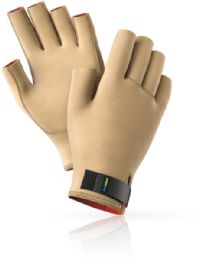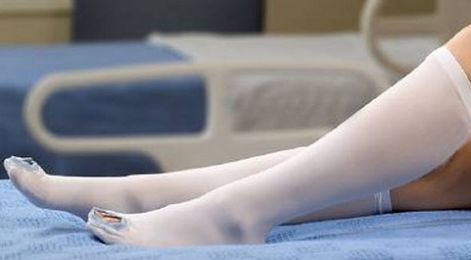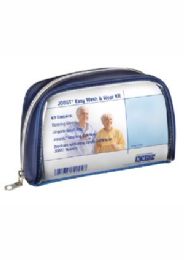


Swelling, Edema and Lymphedema
While most of us have experienced some swelling issues with our bodies at some point in our lives, many people are more prone to these issues for various reasons. Although temporary swelling is not usually something to be concerned about, chronic edema can be more than just troublesome.
As a build-up of fluids in the body’s tissues, edema refers to fluids that have collected in some spot on the body that are not yet returning to the circulatory system. This poor functioning of the circulatory system may have many root causes, some of which could be life-threatening. Chronic edema may indicate a more intensive circulatory disorder, and should always be checked out with a medical professional.
While lymphedema also causes painful swelling, this condition is actually caused by an accumulation of specific lymph fluids in certain parts of the body. This serious condition often occurs after cancer surgery or radiation treatments, in which lymph nodes have been removed or blood vessels may have been damaged.
Less serious and more temporary edema conditions can occur for other reasons, such as flying on an airplane, and during pregnancy.
What Can Help Treat Edema and Lymphedema?
Fortunately, there are many products and devices available on the market today that can be very effective at relieving the swelling and pain from edema and lymphedema, along with helping to prevent worsening problems with these conditions. As many edema problems affect the legs, keeping the legs elevated as often as possible is crucial to effective edema management. Leg elevating splints and air splints can help to comfortably keep the legs raised much more efficiently than pillows.
The most efficacious treatment for edema and lymphedema is compression. Specified forms and levels of compression are utilized to prevent fluid from accumulating in the limbs and other body areas. When sized and applied correctly, compression garments and products can significantly reduce the swelling and pain associated with edema and lymphedema conditions. The use of compression garments is usually advised along with other therapies for these conditions, and these garments often act as maintenance or preventative measures to help control these swelling issues.
How do Compression Garments Work?
Compression garments and products are available in a myriad of choices. Comprising socks, stockings, pantyhose, sleeves, gloves, finger tubes, girdles, facial wraps, wrapping tapes and bandages, everyone’s unique needs are met for controlling and preventing edema and lymphedema anywhere on the body.
Compression clothing and products are formulated from tight, stretchy fabrics and come in a variety of compression level ‘grades’, based on the level of gradient compression they supply. While uniform compression can certainly be effective in the management of edema, more recent research has indicated that gradient compression is more effective, especially for the legs, in improving venous return. The amount or force of this gradient pressure is measured as millimeters of mercury, based on the pressure amount exerted by one millimeter of liquid mercury, or “mmHg”.
When standing still, the natural force of gravity increases the pressure within the legs’ veins, with this pressure greatest at the ankle and then decreasing gradually up the leg and into the body. Generally, about 86 mmHg of pressure is inside the ankle veins of a 5’7” adult who is standing still, as the pressure depends on the vertical distance of the column of blood from the foot to the heart. The usual venous pressure of the vena cava vein close to the heart registers at about 2 mmHg.
Compression stockings, socks and other garments for the legs that offer gradient compression are designed with the pressure strongest at the ankle, with decreasing pressure up the leg to counteract the effects of higher venous pressures. They are available in various levels of pressure for different levels of swelling disorders. Compression sleeves for the arms are also designed and measured in this way, but add classifications of 1 through 4, with the higher number indicative of higher compression and pressure levels.
Here are the specific compression levels and grades for leg compression garments, including socks, stockings, and pantyhose:
8-15 mmHg: Provides very light compression, and can be used by anyone, with or without edema or lymphedema issues. This level can help control minor swelling, and offers a lighter support that can give relief from tired or aching legs.
15-20 mmHg: Still light, but increased support for those who have to stand or sit for long periods of time. This level is often used for travel, and provides relief for minor swelling and varicose veins. This grade is also utilized often for pregnancy.
20-30 mmHg: As the most frequently used compression grade, this level of pressure is appropriate for moderate to severe swelling from edema, lymphedema, superficial thrombophlebitis and venous insufficiency. This pressure level is also utilized to prevent stasis ulcers, and post-sclerotherapy.
30-40 mmHg: It is recommended to use this level only under a doctor’s supervision, as it offers a higher compression for severe swelling caused by varicose veins, lymphedema, edema and after an episode of deep venous thrombosis (DVT), or post-thrombotic syndrome (PTS). This grade is for severe and chronic venous insufficiency, as well as orthostatic hypotension, postural hypotension and venous ulcers.
40-50 mmHg: This highest level of gradient compression should also only be worn under a doctor’s supervision. This grade is used for severe and chronic venous insufficiency or PTS, and for the issues that these disorders cause, such as stasis dermatitis, hyperpigmentation, lipodermatosclerosis, and venous stasis ulcers.
Compression sleeves for the arms also come in varying levels of pressure to treat swelling issues caused by edema and lymphedema, and are often utilized after breast surgeries and/or cancer treatments and surgeries. Their classification system is not as exact or uniform across varying manufacturers of these products as the compression garments for the legs, but the basic guideline is:
Class 1: This compression level offers 15-20 mmHg of pressure for the mildest swelling issues.
Class 2: This compression level offers 20-30 mmHg of pressure for mild to moderate edema or lymphedema swelling and pain.
Class 3: This compression level offers 30-40 mmHg of pressure for moderate to severe lymphedema and edema disorders, and a doctor’s supervision is recommended.
Class 4: This compression level offers 40-60 mmHg of pressure for the most severe cases of swelling from edema, lymphedema and other circulatory disorders. This level should only be used under a doctor’s supervision.
The Benefits of Compression Garments
All compression garments generally work from the outside in; that is, they provide the most pressure at the end of the limb, and the least pressure at the top of the limb. This gradient pressure helps to keep lymph fluids and other fluids from accumulating in the limb, or in one spot within the body. Compression can help enhance circulation throughout the body, helping it to work and function more efficiently.
Anyone with chronic swelling, edema, lymphedema and other circulatory disorders should talk to their doctor about whether compression therapy would be appropriate for their health issues. Some of the most common usages for compression include swelling (usually in the legs, ankles, feet, arms, wrists and hands, but this includes swelling anywhere on the body), varicose veins, tired/achy/heavy legs or arms, post-thrombotic syndrome (PTS), venous ulcers, venous insufficiency, lymphedema and edema. Compression garments are also helpful for those who are sedentary, or sit for long periods of time for work. They are additionally helpful for people who have to stand or be on their feet for long periods of time.
Although it is still unknown exactly how compression therapy helps, what is known are the positive effects this therapy provides. Gradient compression increases the pressure in the subcutaneous tissues, which results in the movement of excess fluid back into the capillaries, while it also aids in the prevention of fluids leaking out of these vessels. Compression therapy additionally helps to reduce the capacity of the superficial veins to expand and fill with too much blood. Consequently, this pressure aids in preventing the blood in these veins to flow backward, helping to avoid congestion and swelling.
As stated previously, it is important to talk to your preferred healthcare professional about the use of compression. There are some contraindications for this therapy, and it is not appropriate for everyone. Those contraindications include: ischemia, untreated septic phlebitis, uncontrolled congestive heart failure, and phlegmasia cerulea dolens. They should also be used with caution if any of the following issues are present: weeping dermatoses, immobility (or bed confinement), skin infections, impaired sensitivity of the limb, and incompatibility or allergy to the fabric of the intended compression garment.
Rehabmart is proud to offer an extensive collection of superior quality products to help reduce swelling and discomfort from edema and lymphedema from such prominent and well-known vendors as GO2, Juzo, Medline, McKesson Medical-Surgical, BSN Medical, North Coast and DeRoyal.
Mike Price, OT
Rehabmart Co-Founder & CTO